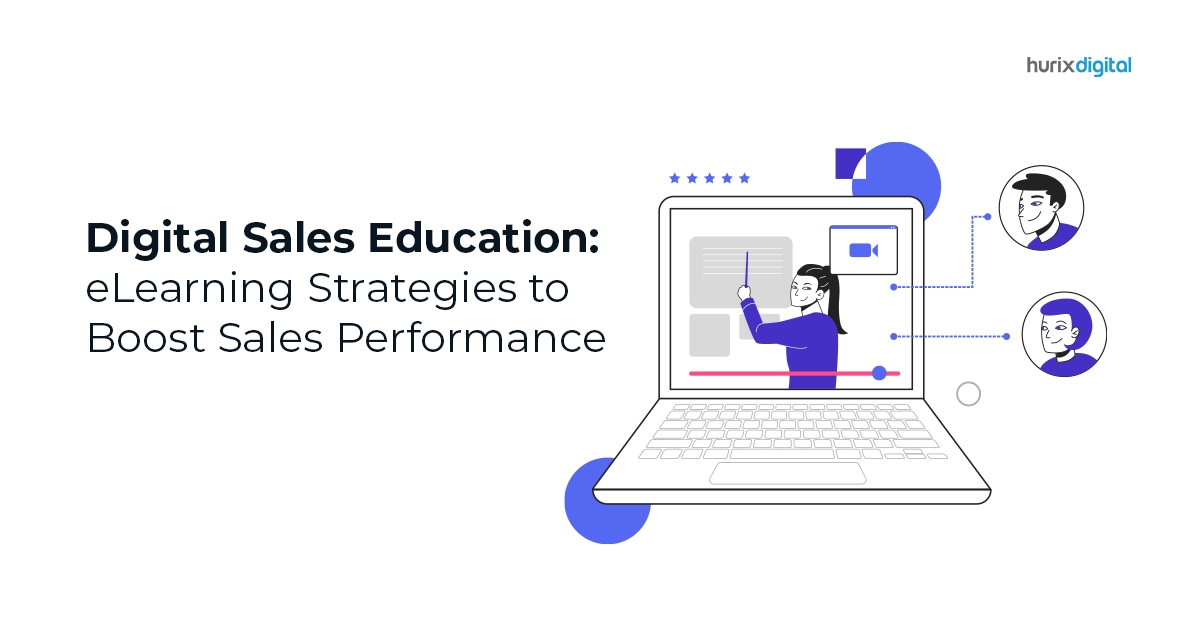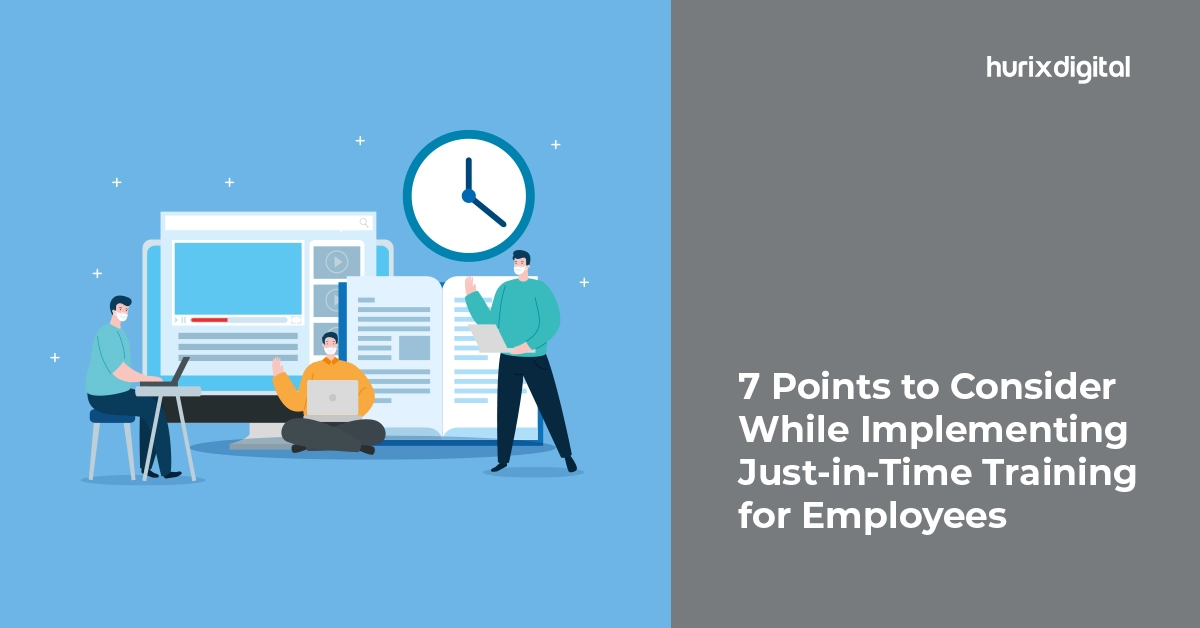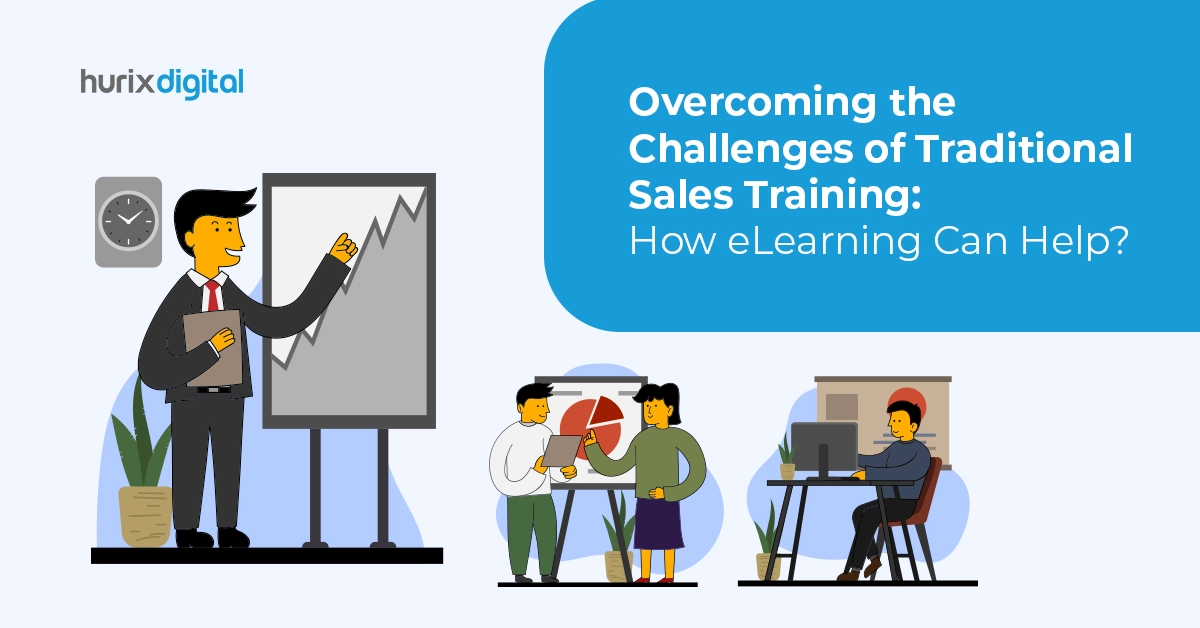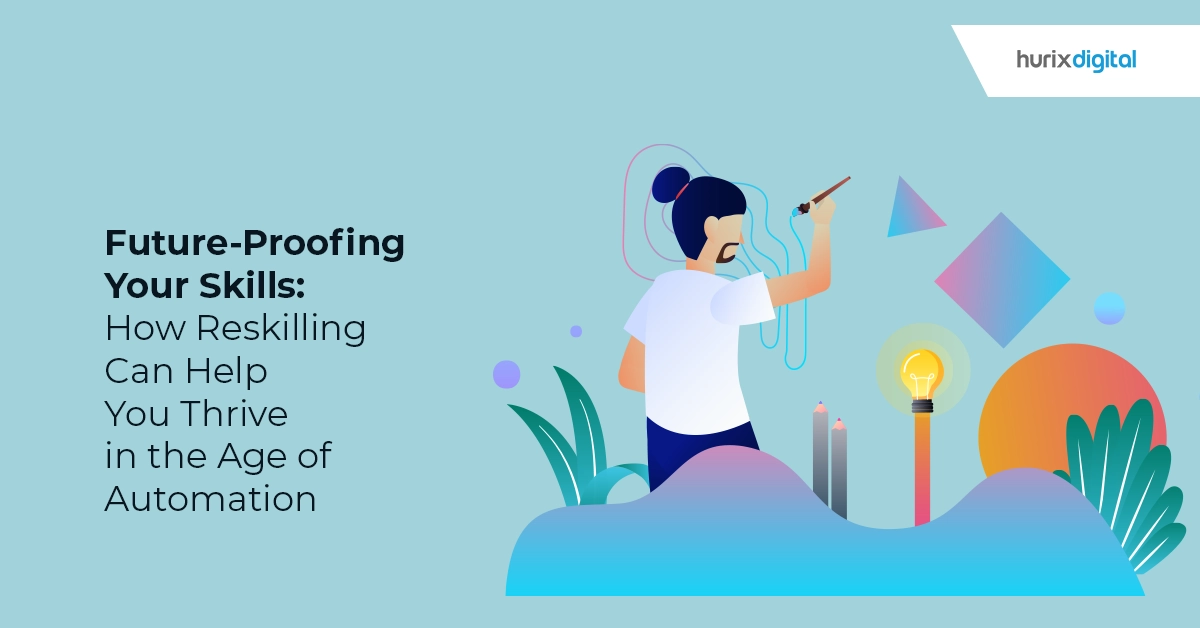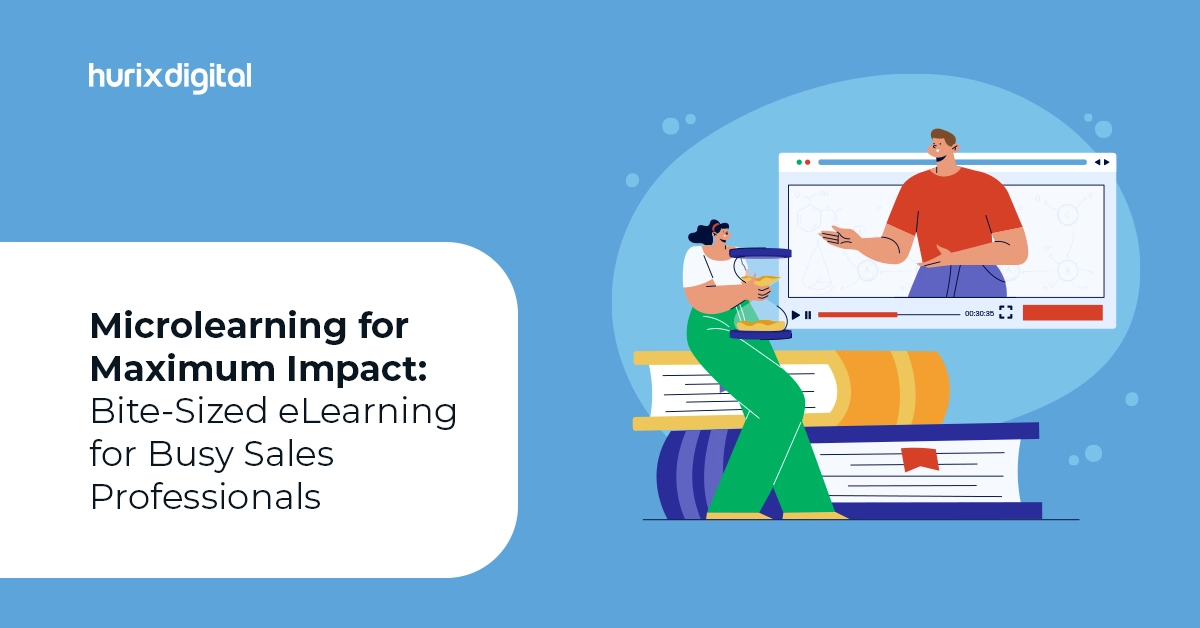
Microlearning for Maximum Impact: Bite-Sized eLearning for Busy Sales Professionals
In today’s fast-moving world, the landscape of education and professional development is evolving rapidly. Working professionals who handle multiple responsibilities at once are constantly looking for an impactful and accessible learning experience.
In this regard, micro-learning is one such powerful pedagogical approach that focuses on delivering information quickly and efficiently. Today, lengthy presentations and other traditional modes of learning are being replaced by micro-learning. The micro-learning market is expected to grow at a CAGR of 13.13% between 2024 and 2029 and will reach $4.87 billion by 2029.
Corporates are also trying to embed micro-learning into the everyday flow of work, fostering active learning and skill development. In fact, according to research conducted by the Aberdeen Group, organizations rated as “Best in Class” are 60% more likely to favor micro-learning for staff development.
In this blog, we explore the world of bite-sized learning!
Table of Contents
What is Micro-Learning?
As the name suggests, micro-learning refers to learning delivered in bite-sized chunks. The bite-sized information ranges from a few minutes to around 20 minutes.
Moreover, the bite-sized learning content is strategically designed to address the specific learning needs of busy professionals. It also fosters continuous learning, allowing professionals to access and absorb information easily during short breaks.
In micro-learning, complex information is broken down into manageable chunks to ensure learning efficiency. Due to its highly optimized results, micro-learning is becoming increasingly popular, and the market size is expected to reach $4.87 billion by 2029.
Also Read: Ensuring Consistency and Quality in Translated Workforce Learning Materials
Benefits of Micro-Learning
Due to its many advantages, microlearning is a preferred method for information acquisition and skill development in various industries, including customized sales training. Some of the key advantages of microlearning include the following:
1. Continuous Learning Culture
Micro-learning fosters a continuous learning culture due to its flexibility and convenience. Working professionals can choose the skills or areas that need immediate attention and address those with micro-learning content. This also ensures that employees can learn skills directly related to their roles.
2. Quick Feedback and Assessment
The bite-sized learning content also includes relevant quizzes and assessments to monitor learners’ progress. After each module, learners can take quizzes to gauge their understanding and focus on areas for improvement.
Nowadays, digital tools and artificial intelligence have integrated real-time feedback mechanisms into micro-learning, enhancing effectiveness and supporting uninterrupted learning.
3. Improved Knowledge Retention
Microlearning makes information more easily retained in brief, concentrated bursts. Microlearning modules featuring spaced repetition and reinforcement of essential concepts can result in higher retention rates than conventional training approaches.
Salespeople who must swiftly retain facts during client meetings may significantly benefit from this and enhance their sales performance.
4. Engagement and Motivation
Besides quizzes and assessments, micro-learning employs multimedia elements to enhance engagement and employee productivity. Elements like gamification, videos, and virtual reality make learning more enjoyable and help maintain interest throughout the training session.
5. Cost-Effectiveness
Unlike traditional training, micro-learning does not involve expenses related to instructors’ fees, traveling costs, venue booking, and more. With various digital tools and platforms, learners can learn anytime and anywhere at their convenience.
Organizations and companies can update the micro-learning content quickly and more regularly. Consequently, micro-learning is often more cost-effective and impactful than traditional training methods.
Implementing Micro-Learning
All the above-mentioned benefits of micro-training can only be leveraged when micro-learning is implemented effectively and efficiently. Organizations often adopt specific strategies and measures to ensure micro-learning fosters positive workforce training.
Mentioned here are some strategies and measures organizations can adopt to ensure effective micro-learning:
1. Clearly Identify Learning Objectives
The first and most crucial step in implementing micro-learning is identifying and defining the learning objectives. One way to implement the right objectives is through following the SMART analysis, i.e., measurable, achievable, relevant, and time-bound. This will ensure that the learning needs of the employees and organization are being met.
2. Breaking Down Content
The USP of micro-learning is strategically designed content that is effective and quick to grasp. Consequently, it is highly advisable to break down content into manageable chunks that cover the learning objectives of the learners while facilitating fast learning.
The goal is to ensure that each chunk covers a single concept, skill, or task logically and coherently. Each chunk should have sufficient interconnections to provide a meaningful learning narrative.
3. Multimedia Formats
Various multimedia formats can be integrated into the micro-learning chunks to provide an immersive learning experience. Short instructional videos of 3-5 minutes can focus on visual demonstrations and explanations, while infographics can highlight important points and processes. Interactive elements like quizzes, simulations, or branching scenarios can also be integrated for active engagement.
4. Mobile Friendly Design
Micro-learning often happens on the go; therefore, optimizing the content for mobile devices can be helpful. This can be highly important, especially for working professionals undergoing sales training in the field or outside the office.
Some features that must be integrated into the mobile layout are responsive design, simplified navigation, and offline access to accommodate learners in low connectivity areas.
5. Integrate with Existing Training
One way to enhance the outcomes of micro-learning is by integrating it with broader existing training initiatives. It can be helpful to reinforce micro-learning as supplementary resources for enhancing classroom or online training.
Cross-referencing can also be done by adding links related to micro-learning in the existing training modules or vice versa. Lastly, curriculum alignment should also be considered when aligning micro-learning with the existing training curriculum.
6. Tracking and Analyzing Performance
Leveraging tracking and analytics functionality can boost learning outcomes and learner engagement. Data on module completion rates, quiz scores, and user interactions can be collected to gauge engagement and training effectiveness. Performance can also be tracked to identify areas of improvement and learners’ preferences.
7. Sharing and Collaboration
Fostering community and collaboration among learners can enhance learning outcomes and engagement. Learners can share their insights and experiences to promote teamwork and collective learning. This can be done through integration forms and chat forums in the micro-learning modules.
Also Read: Top 5 Trends in Workforce Learning and Development
Conclusion
It is safe to say that micro-learning is a powerful tool for busy working professionals seeking skill development and knowledge advancement. However, as organizations adopt micro-learning to enhance employee engagement and product knowledge, aligning content with specific sales objectives, leveraging interactive elements for active learning, and continuously evaluating and adapting based on learner feedback is essential.
Hurix Digital is an innovative eLearning solution that can fulfill all your micro-learning needs. By utilizing their expertise in e-content and training effectiveness, you can offer tailor-made bite-sized learning modules to all your employees. To learn more about them, visit the website or book an appointment today.

Performance, Results, Growth, and Life-Long Learning define my professional life. I am passionate about making workplace learning planful, purposeful, and impactful. I take pride in partnering with clients and bringing them the best in learning design and creating solutions that address business challenges.





